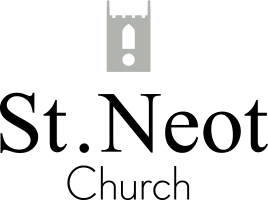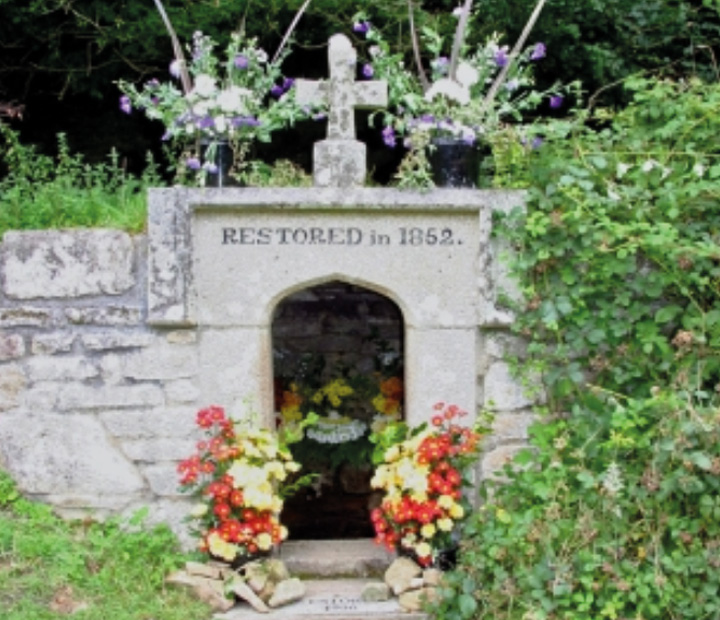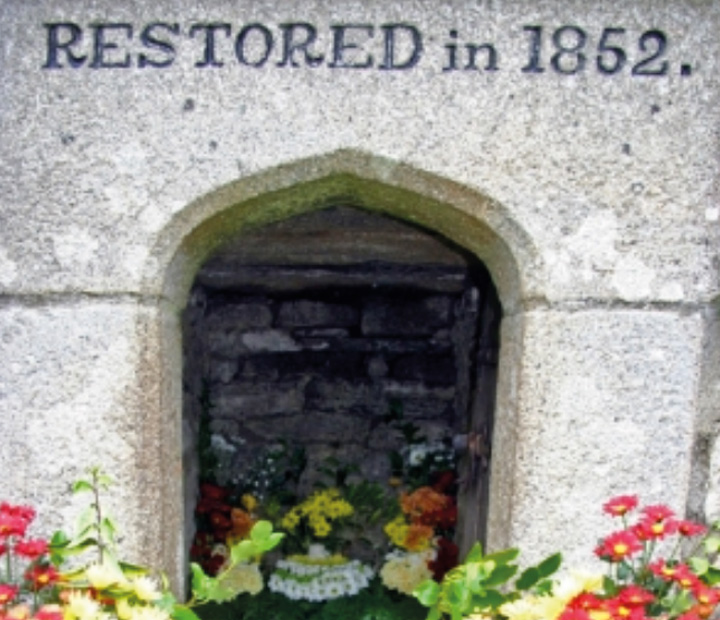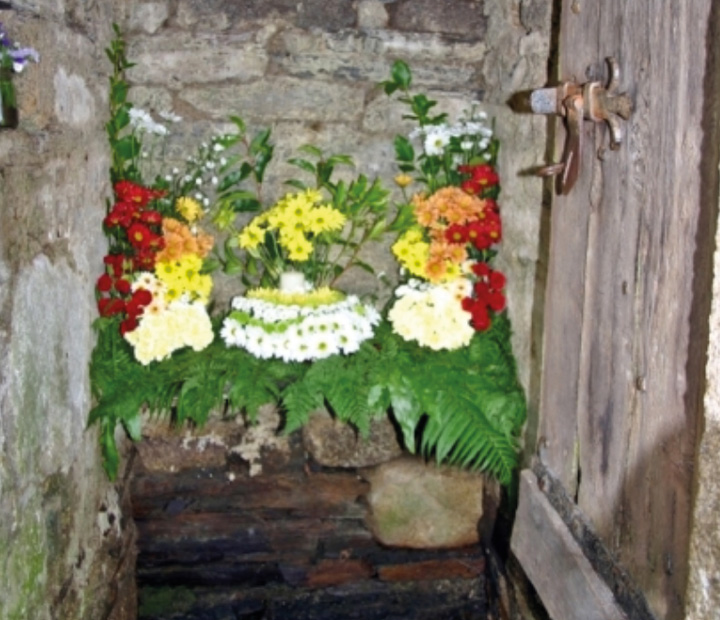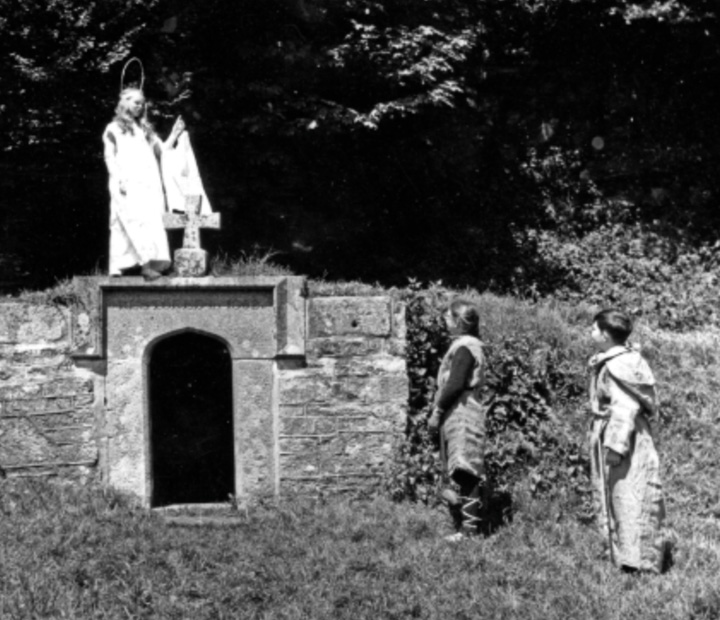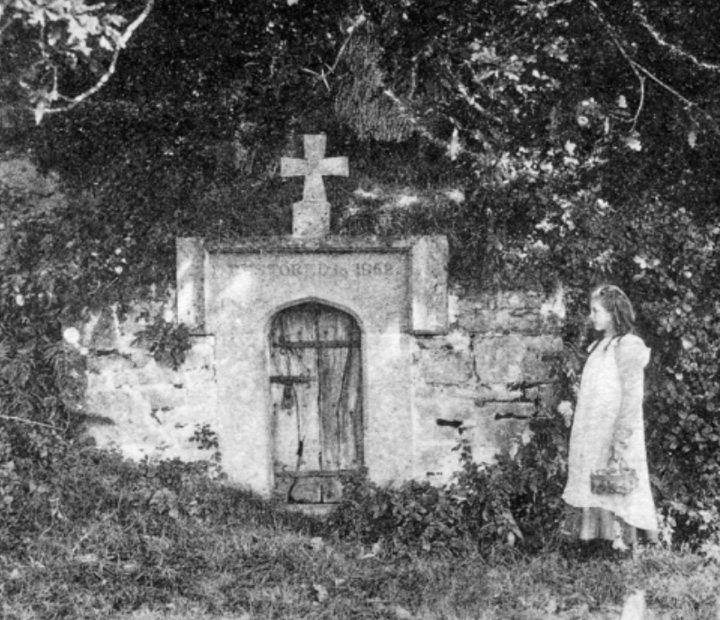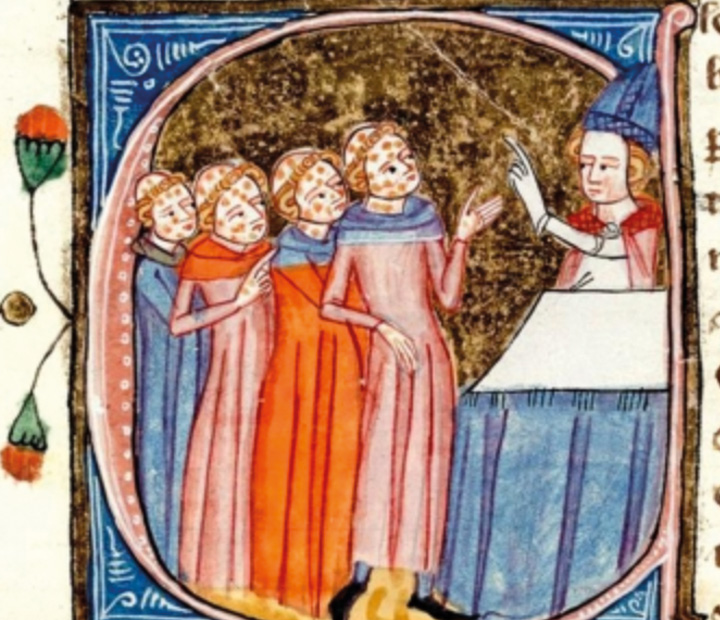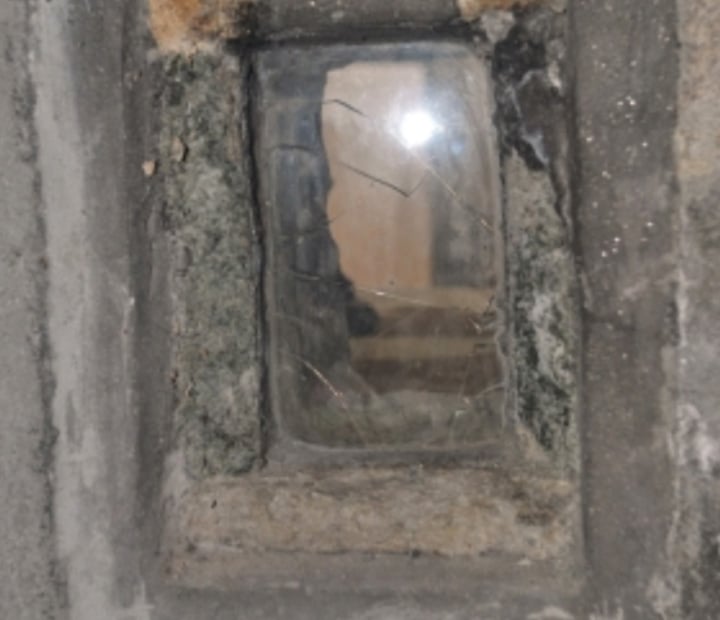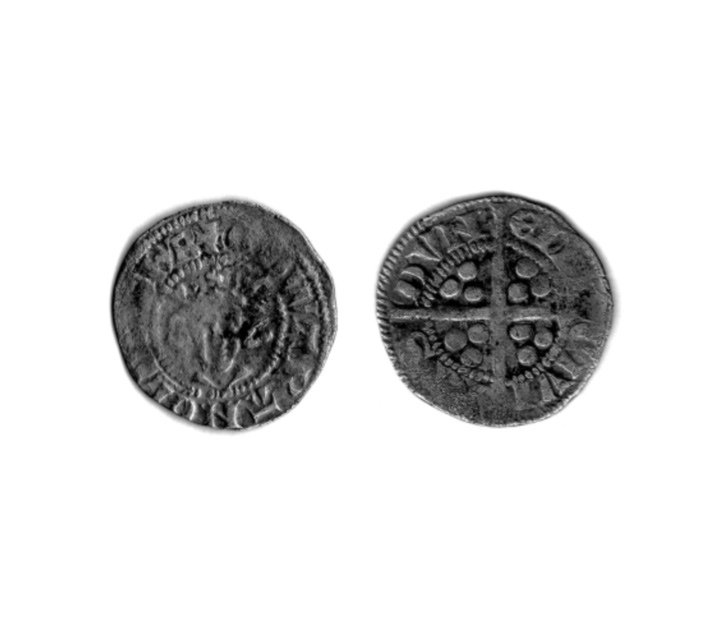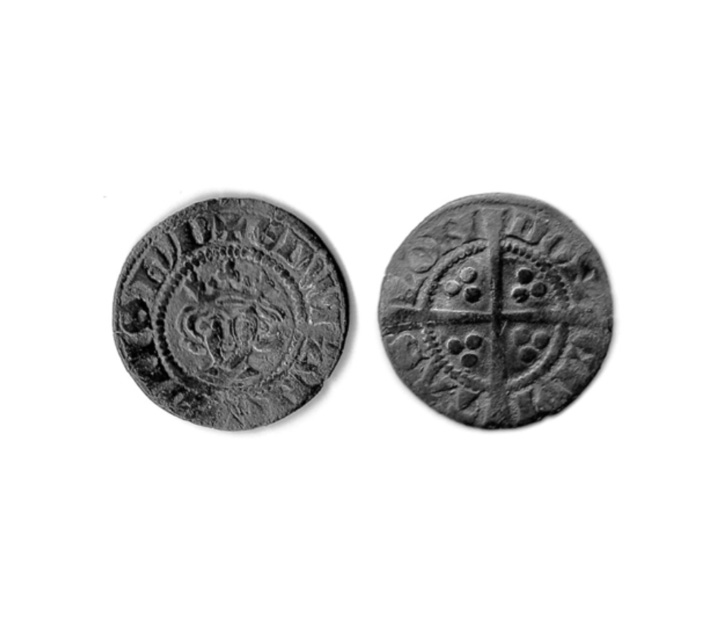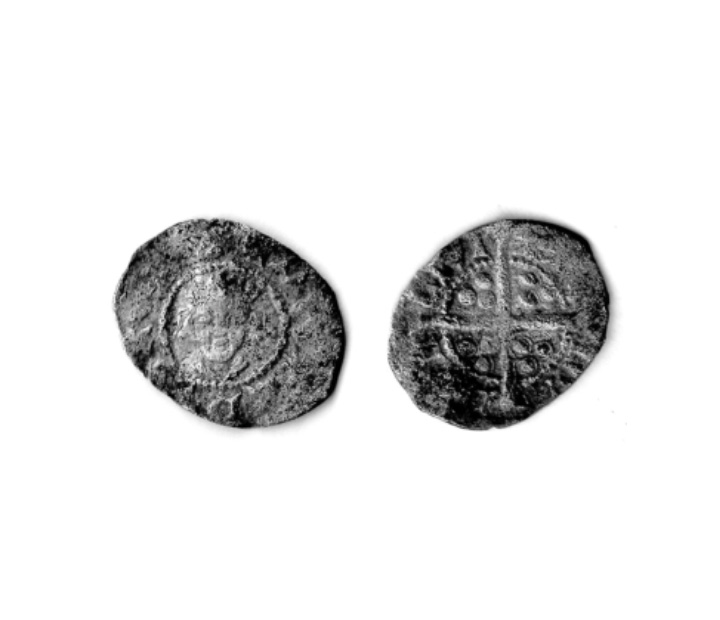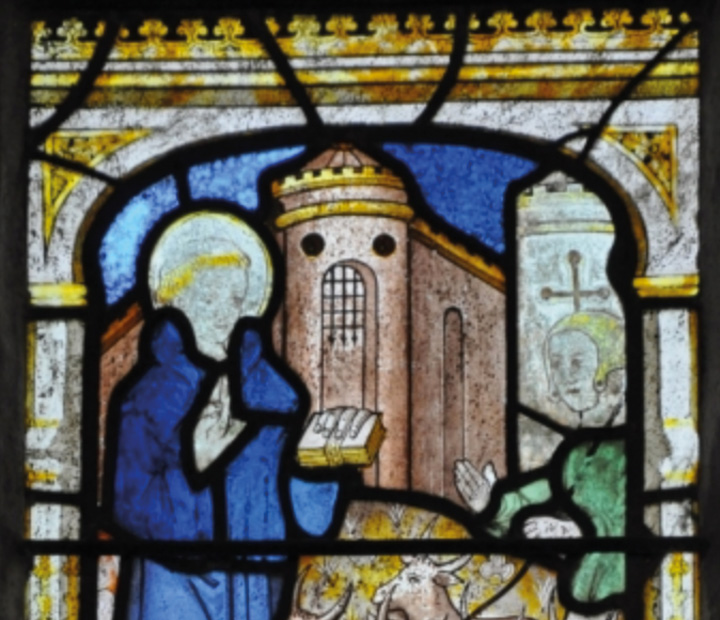St. Neot's Holy Well
"The well was restored in 1852 and 1996."
St Neot's Holy Well is situated on the right a couple of hundred yards down a small lane that starts in between "Cott" and "Carlyon House". The lane is almost opposite the shop in the middle of the village.
As can be seen by the inscriptions the Well was restored in 1852 and 1996. It was almost derelict in 1852. It has always featured in village celebration during the ages.
Leprous Vicar of St. Neot 1314
The Rev. Philip, his surname is not known, was St Neot's "Leprous Vicar" in 1314. The information on this page has been taken from two books by F C Hingeston-Randolph (1889) edited from The Registers of Walter Bronescombe (AD 1257-1280) and Peter Quivil (AD 1280-1291) Bishops of Exeter and (1892) The Register of Walter de Stapeldon Bishop of Exeter (AD 1307-1326).
The first book, Bronescombe/Quivil, details the institution of vicars in St Neot in 1265 & 1279 (p176) and taxation of St Neot by Pope Nicholas IV in 1291 (p467). This book covers the later portion of the reign of Henry III and the first part of the reign of Edward I.
Page 467 - The second, the de Stapeldon book, shows that the Church at St Neot was Re-dedicated on the 14th October 1321 (p137) & the institution of a vicar, Sir John Achym, in St Neot on the 10th December 1318 (p256). This book covers almost the entire reign of Edward II.
The de Stapeldon book also provides the story about the arrangements made in 1314 regarding the vicar who had leprosy (p342). The church, during the middle ages, adopted a very supportive attitude towards the illness and its clergy who caught it. This is illustrated by the picture below.
“A bishop instructing clerics suffering from leprosy” from Omne Bonum by 14th-century clerk James le Palmer (British Library, MS Royal 6 E VI, vol. 2, fol. 301ra). Medieval depictions of leprosy commonly showed the victim to have red spots.
Ordinacio super sustentacione vicarii Sancti Nioti
Apud Sanctum Germanum, die Luna proxima post festum Sancti Edmundi Archiepiscopi, Episcopus remisit domino Radulpho Retyn presbitero, custodi seu coajutori deputato per eundem Episcopum domino Philippo, perpetuo vicario ecclesie Sancti Neoti in Cornubia, lepre morbo laboranti, onus calculandi super administracione sua in dicta custodia. Et dabit statim idem dominus Radulphus ad elemosinam dicti Episcopi viginti solidos, et singulis annis durante dicta custodia viginti solidos, solvendos in festo Nativitatis Sancti Johannis Baptiste; primo termino solucionis viginti solidorum annuorum predictorum incipiente in festo Nativitatis Beati Johannis Baptiste proximo secuturo. Et ordinavit ulterius quod, quia sine periculo idem vicarius non potuit inter sanos ita communiter prout consuevit conversari, quod idem vicarius habeat meliorem cameram, cum domibus adherentibus eidem, excepta aula, ad inhabitandum, comedendum, et bibendum; et quod obturetur hostium inter predictam cameram et aulam, et fiat hostium de novo ad predictam cameram exterius in loco competenti per quod idem vicarius cum opus fuerit egressum habeat et ingressum; et cloaca similiter ad dictam cameram in loco competenti. Item quod prefatus dominus Radulphus solvat dicto vicario singulis septimanis pro sustentacione sua in cibis, potibus et calceatura et ceteris minutis necessariis duos solidos sterlingorum, et singulis [annis] in festo Sancti Michaelis in Septembri vel circiter viginti solidos pro roba sua, quodque sustineat domos dicte vicarie, tam illos quas inhabitat dictus vicarius quam ceteras domos omnes dicte vicarie; et omnia onera ad dictam vicariam spectancia interim subeat et agnoscat. Et super dicta ordinacione habuit literas tantum - Register of Bishop Stapeldon, ed. Hingeston-Randolph, p. 342
The translation below is courtesy of Dr O Padel
Ordinance concerning the maintenance of the vicar of St Neot.
At St Germans, on Monday after the feast of St Edmund Archbishop [= Monday 18 November 1314], the bishop assigned to Ralph Retyn, priest, guardian or coadjutor [= assistant] appointed by the bishop for Philip the perpetual vicar of the church of St Neot in Cornwall, suffering under the sickness of leprosy, the task of reckoning concerning his management in the guardianship. Ralph shall immediately pay 20s. towards the alms of the bishop, and 20s. every year, as long as the guardianship continues, payable on the feast of the Nativity of St John the Baptist, the first term of payment of the yearly 20s. beginning on the next feast of the Nativity of St John.
He further instructed that, since the vicar could not, as formerly, associate with the healthy without risk, he shall have the better chamber, with the buildings attached to it except for the hall, for living, eating, and drinking; and that the doorway between that room and the hall shall be blocked, and an external doorway shall be newly made for that chamber, in an appropriate place, through which the vicar may have egress and ingress when necessary; and a drain similarly for the chamber, in an appropriate place.
Also that Sir Ralph shall pay to the vicar every week, for his maintenance in foods, drinks, and footwear, and in other small necessaries, 2s. sterling; and every year at or about Michaelmas 20s. for his clothing; and that he shall maintain the buildings of the vicarage, both those which the vicar inhabits and all its other buildings; and shall undertake and acknowledge all costs pertaining to the vicarage in the meantime. Concerning this ordinance he has received letters only.
[Philip, whose surname I have not discovered, had been appointed as vicar at some unknown date after 1279 (when a William de Tottonia [= Totnes] was appointed to the vicarage); he was appointed probably during the episcopacy of Thomas Bitton (1292–1307), for which records have not survived. Philip seems to have lived until Monday 23 October 1318, on which date the vicarage fell vacant (Stapeldon, p. 256), and Sir John Achym of St Neot was instituted on 10 December 1318.]
Albeit one hundred and fifty years prior to our St Neot vicar catching the disease, part of this quote below shows that the attitude of some in the church towards Lepers, although segregating them was not overtly hostile or without compassion.
“In contrast to efforts to limit and restrict their lives, medieval communities sometimes were compassionate for people with the disease. In the twelfth century, at least in England, there was a strong sense of charity for people with leprosy (Mac Arthur, 1953). For example, Queen Matilda the spouse of Henry I, was known widely for her charitable acts toward the people with leprosy (Rubin, 1974). The English King John (1204) allowed people with leprosy to have a portion of all flour sold at market. In 1163, the Bishop of Exeter allowed them to enter the markets to collect food or alms and gave them special begging privileges.”
H.C. Covey / The Social Science Journal 38 (2001) 315–321 (page 319)
"The word "Leprosy" came into the English language via Latin and old French."
The word "Leprosy" came into the English language via Latin and old French. The first attested English use is in the Ancrene Wisse, a 13th-century manual for nuns ("Moyseses hond..bisemde o þe spitel uuel & þuhte lepruse." The Middle English Dictionary, s.v., "leprous"). A roughly contemporaneous use is attested in the Anglo-Norman Dialogues of Saint Gregory, "Esmondez i sont li lieprous" (Anglo-Norman Dictionary, s.v., "leprus").
In the Ordinance it is recorded that "...Sir Ralph (de Retyn) shall pay to the vicar every week, for his maintenance in foods, drinks, and footware, and in other small necessaries 2s sterling...". This would have been paid in silver pennies which was what was almost exclusively used for everyday payments. There were 12 pennies to the shilling (s). The vicar would have received 24 silver pennies every week. The only coins minted during the reign of Edward II 1307-1327 were silver pennies, halfpennies and farthings, groats (a four pence piece) had been minted at the start of the reign of Edward I (1272-1307) but not many were made and they were not produced for very long, ceasing production in 1282 and would have been very scarce indeed.
"A silver penny would have bought approximately two dozen eggs or four pints of ale."
Most poorer villagers would not have used coinage on a daily basis but would have conducted their economy using a barter system. Tradesmen and skilled artisans would have used coins. It has been estimated that a silver penny would have bought approximately two dozen eggs or four pints of ale. Water was unsafe to drink. An Archer (considered to be skilled) was paid about seven pence per week, one penny a day!
The alterations to the vicarage would have been to one before the ruins that are beside the present one! It is possible that the "Leper's Squint" in what would have then been the outside wall of the church was constructed at that time. This would have allowed "Philip" whose surname is not recorded, to view Sir Ralph de Retyn conducting services inside the church.
It is probable that vicar Philip lived until Monday 23 October 1318 when it is recorded that the vicarage fell vacant. A new vicar was instituted on the 10 December 1318.
The coin pictured is a coin of Edward II minted between 1315-1318 in Durham (Dunelm) it comes from the episcopal mint of Bishop Kellawe. The coin now weighs only 1.3 grams and is 19mm in diameter, it weighed more when first made but is now 700 years old! The two nearest mints to Cornwall functioning at that time were London and Canterbury. There were mints at Bristol and Exeter but they were not used during the reign of Edward II. Launceston minted coins during the reigns of Aethelred in Saxon times and William I & Henry I in Norman times but these would not have been in use in 1314.
The halfpenny was even smaller than the penny, this one weighs only 0.52 of a gram and is only 15mm in diameter. Below is a Farthing (a quarter of a penny), this one was minted between 1302 and 1307. It is even smaller than the halfpenny, it weighs only 0.35 of a gram and measures 13mm x 11mm. This class 10 coin was produced on an oval flan.
St. Neot King Alfred & Domesday Book
King Alfred ruled Wessex from 871 to 899, when Cornwall was becoming incorporated into it; the last known king of Cornwall, Dungarth, died in 875-6, but his kingdom was already under the control of Wessex. He may be the man commemorated on the Doniert stone in St Cleer parish.
In 885 King Alfred invited Asser, a Bishop from St Davids in South Wales, to come to Wessex to help Alfred in his attempt to revive Anglo-Saxon learning and religion. Alfred put Asser in charge of the monastic church at Exeter, and later made him Bishop of Sherborne, which at that time was the diocesan cathedral for all of Dorset, Devon and Cornwall. Asser died in 908-9, ten years after King Alfred. In 893 he wrote a biography of his king, the famous Life of King Alfred — a very unusual idea at that period (we haven't got Lives of any other Anglo-Saxon kings).
"In 885 King Alfred invited Asser, a Bishop from St Davids in south Wales."
In his Life of King Alfred, Asser describes (chapter 74) how Alfred came hunting in Cornwall, at some time before he became king of Wessex (therefore before 871, and while Dungarth was still sub-king in Cornwall). Alfred had been suffering from a debilitating illness, and while in Cornwall he came to pray at the shrine of a saint called Gueriir, and thus obtained relief from his illness. St Gueriir is otherwise unknown, but we are also told, 'And now St Neot also lies there', so the shrine where King Alfred came to pray, and received relief from his illness, was at St Neot.
Nothing at all is known of St Gueriir; it is very curious that gweres in Cornish means 'to heal', like French guerir. In the sixteenth or seventeenth century 'Guerrier-stoke' was invented by an antiquarian as a former possible name for the village, based on the saint's name plus the Old English stoc or stow, as in Domesday's Neotestov or Neotestou (which appears as Neotestoc in the eleventh-century Life of St Neot).
If Asser was himself responsible for the additional words, 'And now St Neot also lies there', then St Neot must have died and been buried here at some date after about 865, when King Alfred visited St Neot, and before 893, when Asser wrote the Life of King Alfred. This would make St Neot a contemporary of King Alfred, and he was so portrayed in later medieval writings. However, it has been suggested that this clause was a later addition to the Life; if so, it was made anyway before about the year 1000 (when the only known manuscript of the Life was written), and was soon to become untrue, since St Neot's body was removed from Cornwall to Eynesbury in Huntingdonshire in around 980 when a monastery was founded there (renamed St Neots in his honour).
"St Neot's body was removed from Cornwall to Eynesbury in Huntingdonshire in around 980."
In the earliest Life of St Neot (written in the mid-eleventh century, perhaps by a Cornishman, but anyway for St Neots in Huntingdonshire), the saint is portrayed as an Anglo-Saxon, who studied first at Glastonbury, then retired to Cornwall to become a hermit. It is this Life which first tells the story of King Alfred and the Cakes, in Somerset (a story which is not in Asser's Life of King Alfred). Although St Neot is here said to have been a Saxon, nothing is known for sure of his actual origin. All that we know is that he was buried at St Neot, probably between about 865 and 893, and that his remains were later taken to St Neots in Huntingdonshire.
One other point arises concerning King Alfred. The one thing which is sure is that he actually visited St Neot and remained grateful for the relief from illness which he received through praying at the shrine of St Gueriir here. This happened before he became king of Wessex (while one of his three elder brothers was still on the throne), but while the sub-king Dungarth was still ruling Cornwall, who may be commemorated on the stone in St Cleer parish nearby. One of Dungarth's courts would have been at Liskeard, of which the name implies a court (Cornish lys), possibly 'of stags' (Cornish kerwys, older kerwyd); in the later middle ages there were two royal deer parks in the Liskeard parish. King Alfred was on a hunting visit when he visited St Neot. Was he on a royal visit to the sub-king Dungarth, staying at Liskeard and being entertained there?
"In the later middle ages there were two royal deer parks in the Liskeard parish."
The cross of Doniert and the large cross outside the door of St Neot church are both in the new style of ornamented cross, introduced into Cornwall in around 900. This means that the one would be of about the right date for 'Doniert' to refer to King Dungarth (it is a variant spelling of the same name); and the other would be of the right date to have been presented to the church by King Alfred in gratitude for the help that he received from St Gueriir's shrine there. If St Neot died during King Alfred's reign, he might already have been living at St Neot, and might have shared in the king's gratitude. So it is possible that this cross at the church was given to us by King Alfred.
The stone cross that Alfred reputedly gave to St Neot situated in St Neot Churchyard.
Early religious sites in St Neot parish
We may assume that the Church and its associated holy well were the focus of settlement at the time of Domesday Book, and presumably before that. There is every reason to think that the pre-Norman church and community of the 'priests of St Neot' was situated in the present village, probably on the site of the church and vicarage. Since the site has been continuously occupied and rebuilt, traces of that pre-Norman 'monastery' (in loose terms) have not survived, though they could still be present below what we see today.
Of other possible early (pre-Norman) religious sites in the parish, the most promising is St Lukes, three-quarters of a mile south-east of Bolventor. Although now known as a former Methodist chapel, in the later Middle Ages it was a sub-parish within St Neot — sometimes called 'the parish of St Luke' (in 1439 and again in c.1520). The Norman font which was formerly here is now in Tideford Church (moved there in 1830) — but it would be odd for the sub-parish of St Luke to have had baptismal rights in the twelfth century, so was it originally at St Neot, and moved to St Luke after St Neot acquired its new font in the fourteenth century? At any rate the Tideford font deserves note as a twelfth-century font from St Neot parish. St Lukes was presumably created as a chapel-of-ease for the tinners working in the upper Fowey valley in the Middle Ages; its existence (as a chapel) is implied before about 1200-1300, since the adjacent farm (in Altarnun parish) is called Carneglos 'church tor', so the chapel existed while the Cornish language was still spoken in that area (i.e. before about 1200-1300).
Other sites? Lampen and perhaps Lestow are possibilities for additional (early Christian sites, because of their names (Lampen and possibly Lestow both might contain Cornish lann, which means an early church-site; and Lestow possibly containing Old English stow). However, in both cases there could be alternative explanations for the names, and there is no other evidence suggesting either of them as chapel-sites.
No other early chapels or other religious sites are known in the parish. There was a late-medieval chapel of St Neot near Trevenna but there is no reason to think that there was any earlier religious site there. (The name of Trevenna, Treworvena in the 13th century, is 'farm on the hill', Cornish tre war veneth; but it looks like 'farm of monks', Cornish tre venegh, and that resemblance may have given rise to the idea that there was once a monastery there.)
"St Lukes was presumably created as a chapel-of-ease for the tinners working in the upper Fowey valley in the middle ages.
St Neot in Domesday Book
Clerici Sancti Neoti tenent Neotestov et tenebant Tempore Regis Edwardi. Ibi sunt .ii. hidae, que nunquam geldauerunt. Ibi sunt .iiii. bordarii. Valet .v. solidos. Totam hanc terram, preter unam acram quam presbiteri habent, abstulit comes ab aecclesia. Odo tenet de eo, et ualet .v. solidos; prius ualebat uiginti solidos.
The clerics of St Neot hold 'Neot-stow', and held it in the time of King Edward (= until 1066). There are two hides (of land) there, which have never paid tax. There are four 'bordars' there (= cottage-tenants, villeins). It is worth 5 shillings (= yearly?). All this land, except for one acre which the priests hold, the Count (of Mortain) has taken away from the church. Odo holds it from him, and it is worth 5 shillings; formerly it was worth 20 shillings.
See Keynes & Lapidge, Alfred the Great (1983) Pp 88 – 9 254 -5 (notes141 -2) 51 – 3 (on Asser)
Dr O Padel © 2011
